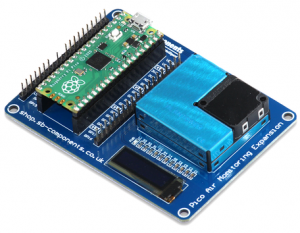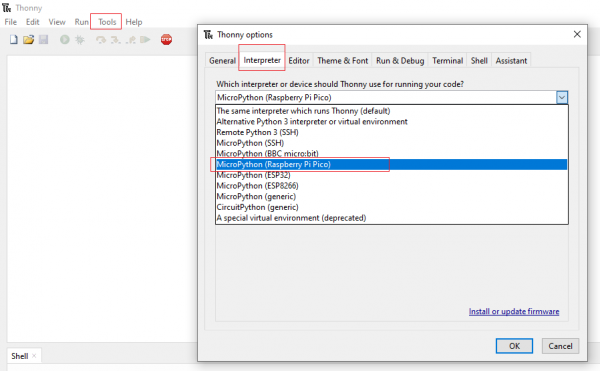Difference between revisions of "Pico-Air-Monitoring"
From SB-Components Wiki
| Line 26: | Line 26: | ||
* Download Pico air monitoring expansion repository from the below link: | * Download Pico air monitoring expansion repository from the below link: | ||
Source code: https://github.com/sbcshop/Pico-Air-Monitoring-Expansion | Source code: https://github.com/sbcshop/Pico-Air-Monitoring-Expansion | ||
| − | * open Thonny IDE and create 2 new files as ssd1306.py and pmsa003.py with the same content of the file you have downloaded from the above repository or you can also save these 2 files in raspberry pi pico from the file menu -> save as and select raspberry pi pico | + | * open Thonny IDE and create 2 new files as '''"ssd1306.py"''' and '''"pmsa003.py"''' with the same content of the file you have downloaded from the above repository or you can also save these 2 files in raspberry pi pico from the file menu -> save as and select raspberry pi pico |
| − | * now open Board_Test.py file in thonny IDE and click on green play button to run the code. it will display the value of PM 1.0, PM 2.5 and PM 10 on 0.91 inch | + | * now open '''"Board_Test.py"''' file in thonny IDE and click on the green play button to run the code. it will display the value of PM 1.0, PM 2.5, and PM 10 on 0.91-inch OLED display. |
== Resources == | == Resources == | ||
Revision as of 10:20, 29 October 2021
Pico Air Monitoring Expansion
Features
Specifications

Buy it From : Click Here
Pinout
Installation
MicroPython
- Stack Raspberry Pi Pico on the female header of Pico Air Monitoring Expansion.
- Connect USB cable on Raspberry Pi Pico USB port.
- Choose interpreter as MicroPython (Raspberry Pi pico).
- Download Pico air monitoring expansion repository from the below link:
Source code: https://github.com/sbcshop/Pico-Air-Monitoring-Expansion
- open Thonny IDE and create 2 new files as "ssd1306.py" and "pmsa003.py" with the same content of the file you have downloaded from the above repository or you can also save these 2 files in raspberry pi pico from the file menu -> save as and select raspberry pi pico
- now open "Board_Test.py" file in thonny IDE and click on the green play button to run the code. it will display the value of PM 1.0, PM 2.5, and PM 10 on 0.91-inch OLED display.

